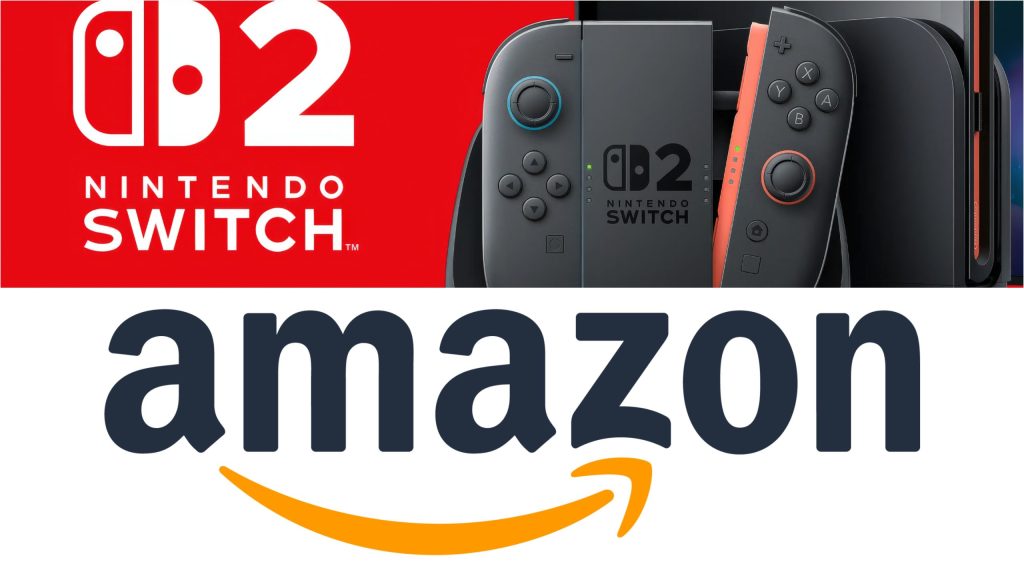In a significant development impacting both consumers and the gaming industry, Amazon US has lost the right to sell Nintendo products directly on its platform. This news follows a detailed report from Bloomberg, which outlines the circumstances leading to this surprising turn of events. The absence of Nintendo items from Amazon, particularly during the critical launch period of the Nintendo Switch 2, could reshape purchasing habits for consumers and pose challenges for Amazon’s overall sales strategy.
Issues with Third-Party Sellers
The crux of the matter lies in Nintendo’s concerns over third-party sellers on Amazon. According to Bloomberg’s sources, these sellers were acquiring Nintendo products in Southeast Asia, where prices are generally lower, and then reselling them in the US market. This pricing strategy allowed these sellers to undercut the official retail prices set by Nintendo, effectively diminishing brand integrity and overall sales revenue for the Japanese gaming giant.
In an effort to mend relations and reassure Nintendo, Amazon proposed the introduction of authenticity labels for products sold through its platform. These labels were intended to prevent counterfeiting and guarantee the legitimacy of items, but Nintendo deemed this measure insufficient. Their concerns over brand protection and product authenticity ultimately led them to the decision to remove their products from Amazon US, marking a significant shift in the relationship between the two entities.
The Impact on Nintendo’s Sales Strategy
Despite Amazon US being one of the largest online marketplaces in the country, Nintendo’s recent launch of the Nintendo Switch 2 has proved remarkably successful without its presence on the platform. Launched on June 6, 2025, the Switch 2 sold over 3.5 million units in just four days, marking it as the fastest-selling console in history, outpacing the record held by its predecessor, the original Switch. According to Wccftech, the new console sold twice as fast as the original Switch during the same launch timeframe.
Moreover, within the first week of its release, the Switch 2 managed to sell 1.1 million units in the United States alone. This milestone not only establishes a new record but also surpasses the previous benchmark set by Sony’s PlayStation 2 back in October 2000. The fact that Nintendo achieved these numbers without the sales potential of Amazon US—responsible for two-thirds of global sales—highlights the brand’s resilience and loyalty among consumers.
Market Reactions and Future Implications
The decision to pull Nintendo products from Amazon has sparked a range of reactions from both consumers and industry analysts. Some consumers may feel frustrated by the lack of options on one of their preferred shopping platforms, forcing them to consider other retailers for their gaming needs. On the flip side, this situation enables Nintendo to emphasize its official channels, potentially enhancing direct sales through its own website and other authorized retailers.
- In the UK and Canada, Nintendo products remain available through various platforms, further showcasing the brand’s global reach.
- Industry experts are closely watching how Nintendo’s direct sales strategy will evolve post-Amazon exit, particularly in light of recent sales successes.
- Amazon’s response to this situation may involve seeking partnerships with other game developers or diversifying its product offerings to maintain consumer engagement.
Amazon’s initial response to the Bloomberg report was succinct and dismissive, stating, “The claims made by Bloomberg regarding our relationship with Nintendo are inaccurate,” though no specifics were offered to clarify this assertion. This lack of detail leaves consumers and industry watchers speculating about the underlying issues at hand and how they will shape future retail strategies for both Amazon and Nintendo.
Conclusion
The fallout from Amazon’s inability to sell Nintendo products highlights the complexities of retail partnerships in the gaming industry. As the Nintendo Switch 2 continues to break sales records, the spotlight now turns to how this shift will affect both Amazon’s competitive stance in the market and Nintendo’s sales strategies moving forward. With the gaming landscape continuously changing, this situation represents only the latest chapter in a long-standing relationship between key retail players and major gaming franchises.
Future developments in this ongoing story will undoubtedly provide insights into the evolving dynamics of digital sales and the priorities of both retailers and game developers. Stay tuned for further updates as we continue to monitor this situation closely.

